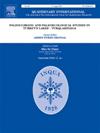法国西北部中石器-新石器时期人类和气候对生物多样性的影响
IF 1.9
3区 地球科学
Q3 GEOGRAPHY, PHYSICAL
引用次数: 0
摘要
新石器时代的转变始于公元前10000年左右的西亚,由于这一时期人类化的开始和气候的波动,新石器时代的转变对生物多样性的动态和狩猎采集者社区产生了重大影响。新石器时代的农民在公元前6千年逐渐扩散到欧洲西北部的大西洋边缘,比欧洲大陆的其他地区要晚。本系统综述旨在通过孢粉学、考古学和古基因组学的跨学科研究,揭示在人类和气候影响下,美洲地块新石器时代发生的景观转变和生态位的变化。这个地块位于法国西北部,这里曾是中石器时代和新石器时代社会的所在地,人们对这些社会进行了广泛的研究。然而,最近的研究对这两个文化群体在该地区的共存提出了质疑,有必要根据这些新发现对文献进行重新评估。该系统综述结合花粉序列分析揭示了该地区植被组成、开放程度和驯化类群逐渐引入的时空异质性。这一分析应该放在西北欧农牧生活方式被推迟采用的背景下看,这归因于所遇到的不同气候条件,这些社会及其驯化的分类群需要时间来适应。需要进一步的研究来明确区分人为影响和气候影响,基于花粉序列的古气候重建有望解决这一问题。本文章由计算机程序翻译,如有差异,请以英文原文为准。
Anthropic and climatic impacts on biodiversity during the Mesolithic-Neolithic transition in North-Western France
The Neolithic transition, which began around 10,000 BCE in Western Asia, has significantly impacted the biodiversity dynamics and the hunter-gatherer communities due to the beginning of anthropization and climate fluctuations during this period. Neolithic farmers gradually spread to the Atlantic margins of North-Western Europe during the 6th millennium BCE, arriving later than in other parts of the continent.
This systematic review aims to shed a light on the landscape transformations and shifts in the ecological niches that occurred during neolithization in the Armorican Massif, driven by human and climatic influences, through an interdisciplinary examination of palynology, archaeology and palaeogenomics. This Massif is situated in North-Western France which hosted well established Mesolithic and Neolithic societies that have been extensively studied. However, recent research has called into question the coexistence of these two cultural groups in this area, necessitating a reevaluation of the literature in light of these new findings.
This systematic review coupled with an analysis of pollen sequences reveals spatial and temporal heterogeneity in vegetation composition, openness, and the gradual introduction of domesticated taxa into the region. This analysis should be seen in the context of the delayed adoption of the agro-pastoral lifestyle in North-Western Europe, attributed to the different climatic conditions encountered, which required time for these societies and their domesticated taxa to adapt.
Further investigation is needed to clearly differentiate between anthropogenic and climatic impacts and paleo-climatic reconstruction based on pollen sequences looks promising for addressing this issue.
求助全文
通过发布文献求助,成功后即可免费获取论文全文。
去求助
来源期刊

Quaternary International
地学-地球科学综合
CiteScore
5.60
自引率
4.50%
发文量
336
审稿时长
3 months
期刊介绍:
Quaternary International is the official journal of the International Union for Quaternary Research. The objectives are to publish a high quality scientific journal under the auspices of the premier Quaternary association that reflects the interdisciplinary nature of INQUA and records recent advances in Quaternary science that appeal to a wide audience.
This series will encompass all the full spectrum of the physical and natural sciences that are commonly employed in solving Quaternary problems. The policy is to publish peer refereed collected research papers from symposia, workshops and meetings sponsored by INQUA. In addition, other organizations may request publication of their collected works pertaining to the Quaternary.
 求助内容:
求助内容: 应助结果提醒方式:
应助结果提醒方式:


